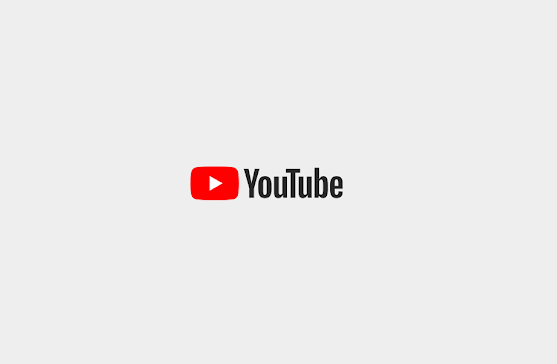SOCIAL
YouTube Tests Improved Comment Removal Notifications, Updated Video Performance and Hashtag Insights

YouTube’s looking to provide more context on content removals and violations, while it’s also experimenting with a new form of analytics on average video performance benchmarks, along with improved hashtag discovery, which could impact your planning and process.
First off, on policy violations – YouTube’s looking to provide more context on comment removals via an updated system that will link users through to the exact policy that they’ve violated when a comment is removed.
As explained by YouTube’s Conor Kavanagh:
“Many users have told us that they would like to know if and when their comment has been removed for violating one of our Community Guidelines. Additionally, we want to protect creators from a single user’s ability to negatively impact the community via comments, either on a single channel or multiple channels.”
The new comment removal notification aims to address this, by providing more context as to when a comment has been removed for violating the platform’s Community Guidelines.
In expansion of this, YouTube will also put some users into timeout if they keep breaking the rules. Literally:
“If someone leaves multiple abusive comments, they may receive a temporary timeout which will block the ability to comment for up to 24 hours.”
YouTube says that this will hopefully reduce the amount of abusive comments across the platform, while also adding more transparency to the process, in order to help people understand how they’ve broken the rules, which could also help to guide future behavior.
On a similar note, YouTube’s also expanding its test of timestamps in Community Guidelines policy violation notifications for publishers, which provide more specific details on when a violation has occurred in video clips.
Initially only available for violations of its ‘Harmful and Dangerous’ policy, YouTube’s now expanding these notifiers to violations related to ‘Child Safety’, ‘Suicide and Self-Harm’, and ‘Violent or Graphic’.
“If you’re in the experiment, you’ll see these timestamps in YouTube Studio as well as over email if we believe a violation has occurred. We hope these timestamps are useful in understanding why your video violated our policies and we hope to expand to more policies over time.”
On another front, YouTube’s also testing a new analytics card in YouTube Studio which will show creators the typical amount of views they get on different formats, including VODs, Shorts, and live streams.

As you can see in this example, the new data card will provide insight into the average amount of views you see in each format, based on your the last 10 uploads in each, which could provide more comparative context on performance.
Finally, YouTube’s also launched a test that aims to showcase more relevant hashtags on video clips.
“We’re launching an experiment to elevate the hashtags on a video’s watch page that we’ve found viewers are interested in, instead of just the first few added to the video’s description. Hashtags are still chosen by creators themselves – nothing is changing there – the goal of the experiment is simply to drive more engagement with hashtags while connecting viewers with content they will likely enjoy.”
So YouTube will be looking to highlight more relevant hashtags in video clips, as a means to better connect users to more video clips on the same topic.
Which could put more emphasis on hashtag use – so it could be time to upgrade your hashtag research approach in line with the latest trending topics.
All of these updates are fairly minor, but they could impact your YouTube approach, and it’s worth considering the potential impacts in your process.
SOCIAL
Snapchat Explores New Messaging Retention Feature: A Game-Changer or Risky Move?

In a recent announcement, Snapchat revealed a groundbreaking update that challenges its traditional design ethos. The platform is experimenting with an option that allows users to defy the 24-hour auto-delete rule, a feature synonymous with Snapchat’s ephemeral messaging model.
The proposed change aims to introduce a “Never delete” option in messaging retention settings, aligning Snapchat more closely with conventional messaging apps. While this move may blur Snapchat’s distinctive selling point, Snap appears convinced of its necessity.
According to Snap, the decision stems from user feedback and a commitment to innovation based on user needs. The company aims to provide greater flexibility and control over conversations, catering to the preferences of its community.
Currently undergoing trials in select markets, the new feature empowers users to adjust retention settings on a conversation-by-conversation basis. Flexibility remains paramount, with participants able to modify settings within chats and receive in-chat notifications to ensure transparency.
Snapchat underscores that the default auto-delete feature will persist, reinforcing its design philosophy centered on ephemerality. However, with the app gaining traction as a primary messaging platform, the option offers users a means to preserve longer chat histories.
The update marks a pivotal moment for Snapchat, renowned for its disappearing message premise, especially popular among younger demographics. Retaining this focus has been pivotal to Snapchat’s identity, but the shift suggests a broader strategy aimed at diversifying its user base.
This strategy may appeal particularly to older demographics, potentially extending Snapchat’s relevance as users age. By emulating features of conventional messaging platforms, Snapchat seeks to enhance its appeal and broaden its reach.
Yet, the introduction of message retention poses questions about Snapchat’s uniqueness. While addressing user demands, the risk of diluting Snapchat’s distinctiveness looms large.
As Snapchat ventures into uncharted territory, the outcome of this experiment remains uncertain. Will message retention propel Snapchat to new heights, or will it compromise the platform’s uniqueness?
Only time will tell.
SOCIAL
Catering to specific audience boosts your business, says accountant turned coach

While it is tempting to try to appeal to a broad audience, the founder of alcohol-free coaching service Just the Tonic, Sandra Parker, believes the best thing you can do for your business is focus on your niche. Here’s how she did just that.
When running a business, reaching out to as many clients as possible can be tempting. But it also risks making your marketing “too generic,” warns Sandra Parker, the founder of Just The Tonic Coaching.
“From the very start of my business, I knew exactly who I could help and who I couldn’t,” Parker told My Biggest Lessons.
Parker struggled with alcohol dependence as a young professional. Today, her business targets high-achieving individuals who face challenges similar to those she had early in her career.
“I understand their frustrations, I understand their fears, and I understand their coping mechanisms and the stories they’re telling themselves,” Parker said. “Because of that, I’m able to market very effectively, to speak in a language that they understand, and am able to reach them.”Â
“I believe that it’s really important that you know exactly who your customer or your client is, and you target them, and you resist the temptation to make your marketing too generic to try and reach everyone,” she explained.
“If you speak specifically to your target clients, you will reach them, and I believe that’s the way that you’re going to be more successful.
Watch the video for more of Sandra Parker’s biggest lessons.
SOCIAL
Instagram Tests Live-Stream Games to Enhance Engagement

Instagram’s testing out some new options to help spice up your live-streams in the app, with some live broadcasters now able to select a game that they can play with viewers in-stream.
As you can see in these example screens, posted by Ahmed Ghanem, some creators now have the option to play either “This or That”, a question and answer prompt that you can share with your viewers, or “Trivia”, to generate more engagement within your IG live-streams.
That could be a simple way to spark more conversation and interaction, which could then lead into further engagement opportunities from your live audience.
Meta’s been exploring more ways to make live-streaming a bigger consideration for IG creators, with a view to live-streams potentially catching on with more users.
That includes the gradual expansion of its “Stars” live-stream donation program, giving more creators in more regions a means to accept donations from live-stream viewers, while back in December, Instagram also added some new options to make it easier to go live using third-party tools via desktop PCs.
Live streaming has been a major shift in China, where shopping live-streams, in particular, have led to massive opportunities for streaming platforms. They haven’t caught on in the same way in Western regions, but as TikTok and YouTube look to push live-stream adoption, there is still a chance that they will become a much bigger element in future.
Which is why IG is also trying to stay in touch, and add more ways for its creators to engage via streams. Live-stream games is another element within this, which could make this a better community-building, and potentially sales-driving option.
We’ve asked Instagram for more information on this test, and we’ll update this post if/when we hear back.
-

 SEARCHENGINES7 days ago
SEARCHENGINES7 days agoGoogle Core Update Volatility, Helpful Content Update Gone, Dangerous Google Search Results & Google Ads Confusion
-

 SEO7 days ago
SEO7 days ago10 Paid Search & PPC Planning Best Practices
-

 MARKETING5 days ago
MARKETING5 days ago5 Psychological Tactics to Write Better Emails
-

 SEARCHENGINES6 days ago
SEARCHENGINES6 days agoWeekend Google Core Ranking Volatility
-

 MARKETING6 days ago
MARKETING6 days agoThe power of program management in martech
-

 SEO6 days ago
SEO6 days agoWordPress Releases A Performance Plugin For “Near-Instant Load Times”
-

 PPC5 days ago
PPC5 days ago20 Neuromarketing Techniques & Triggers for Better-Converting Copy
-
SEARCHENGINES5 days ago
Daily Search Forum Recap: April 15, 2024














You must be logged in to post a comment Login